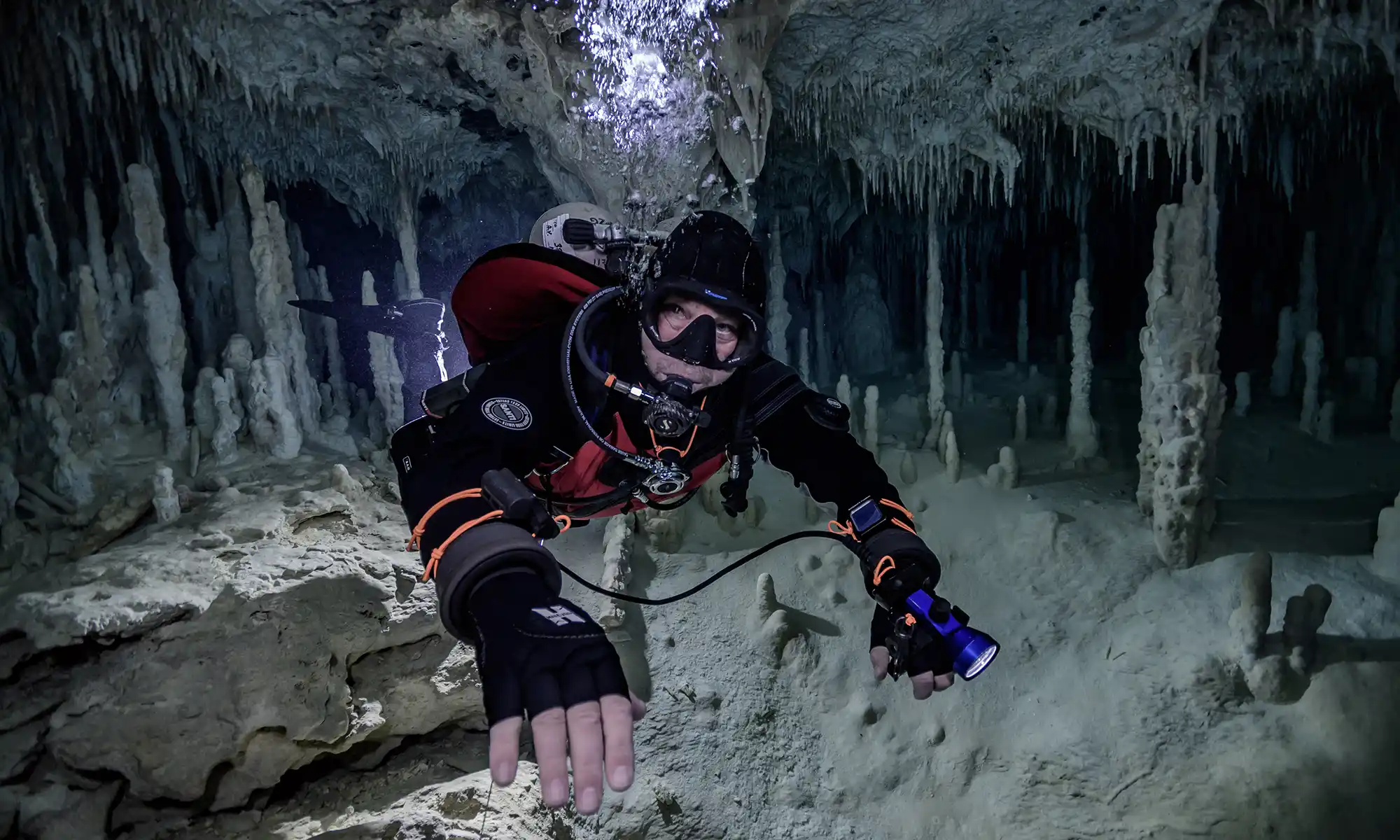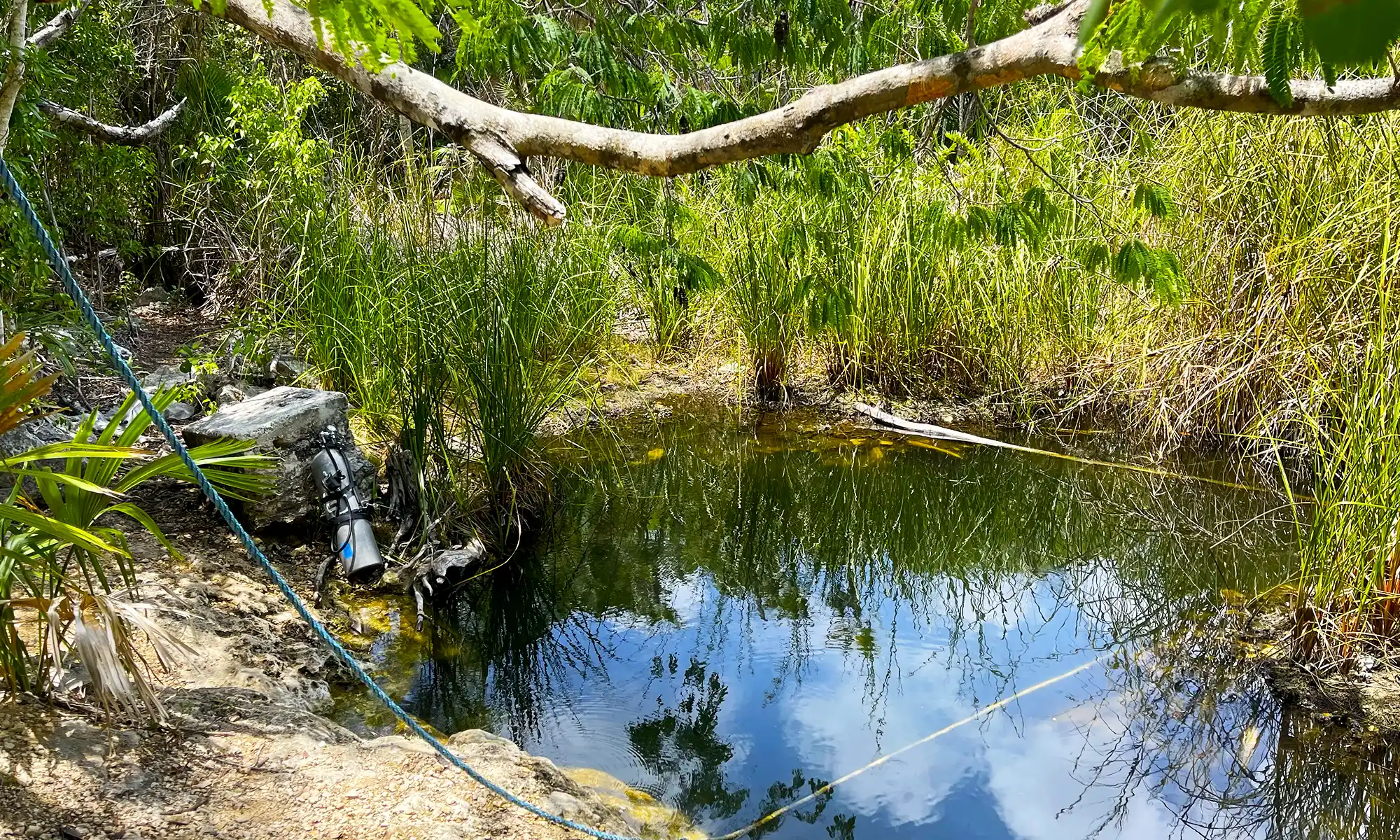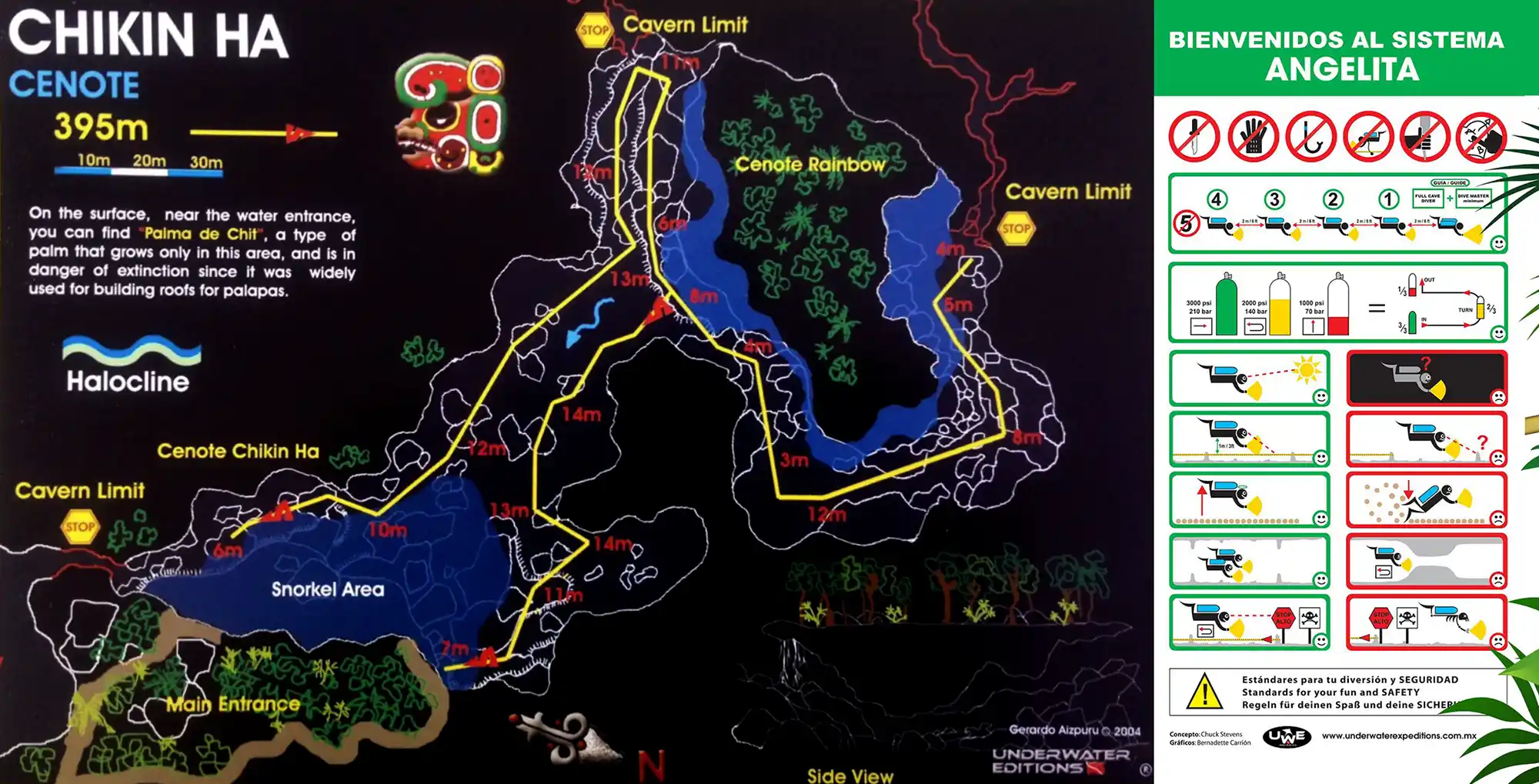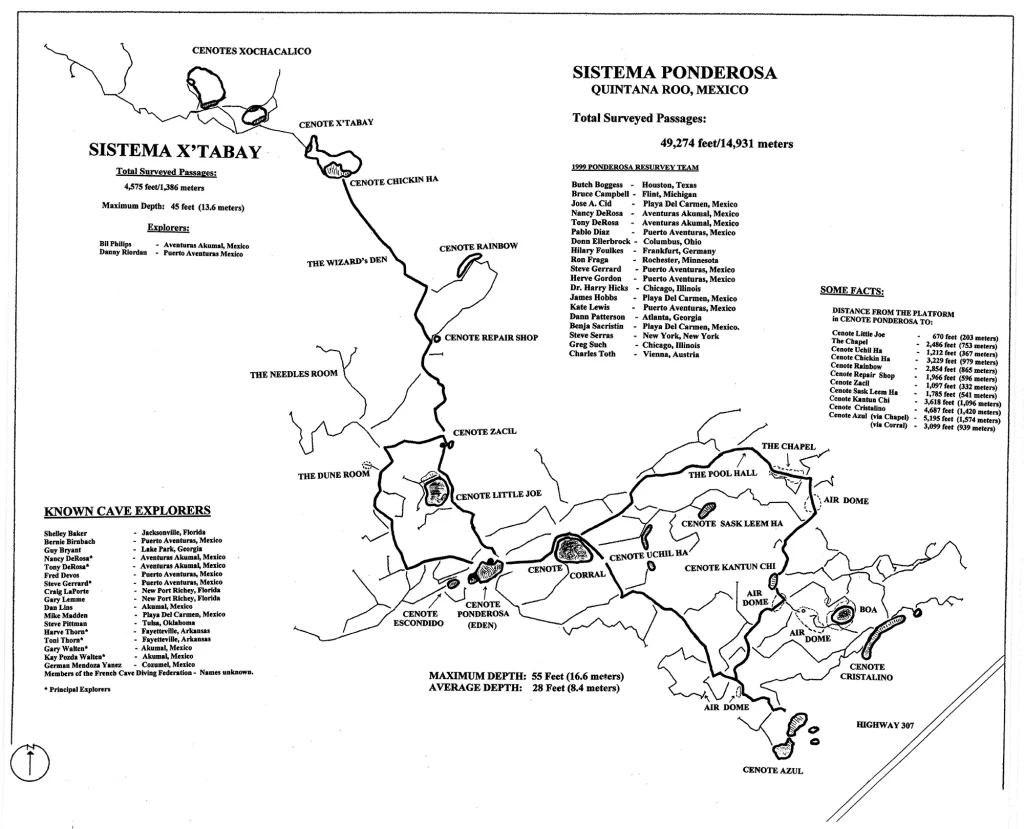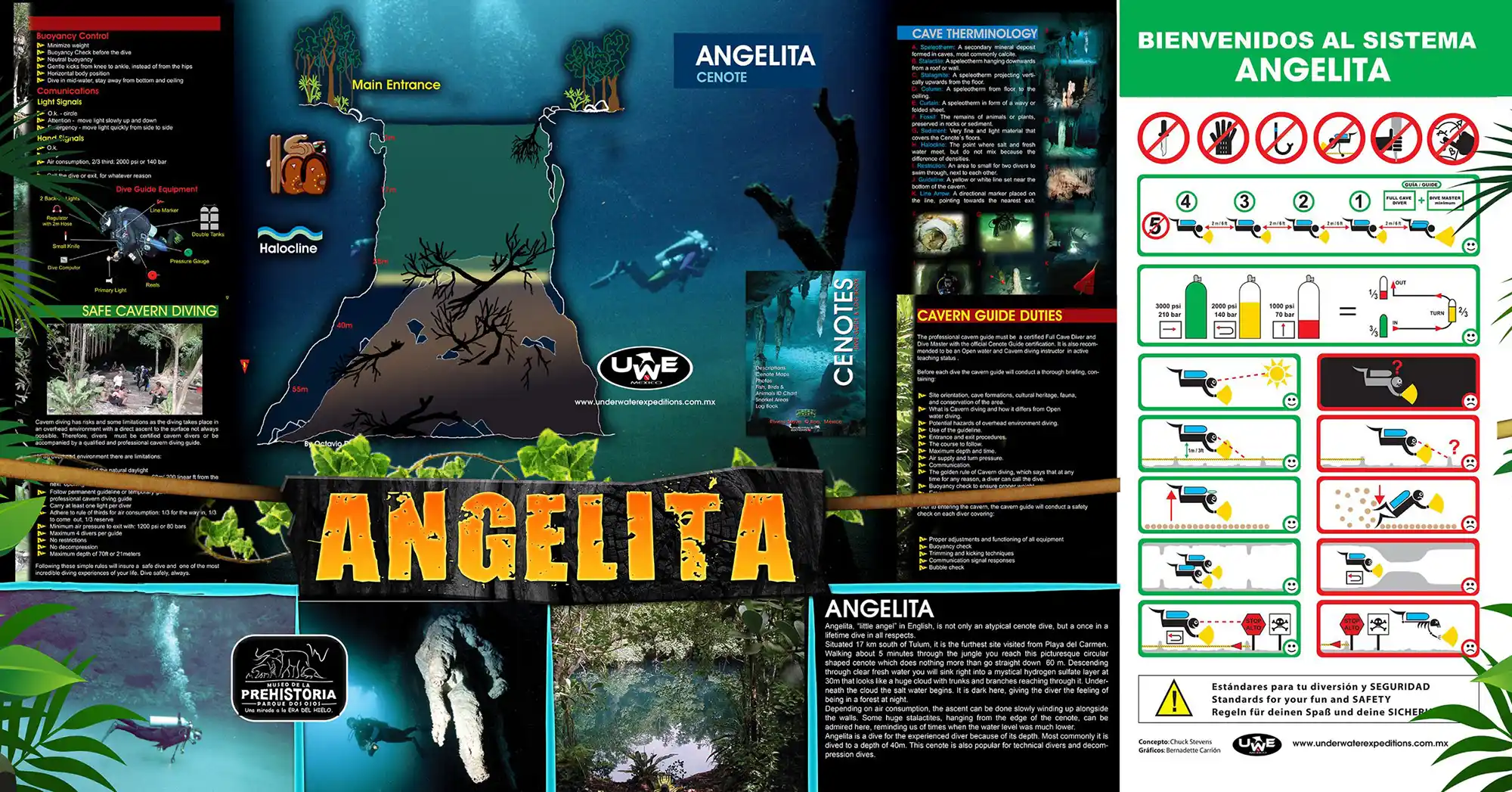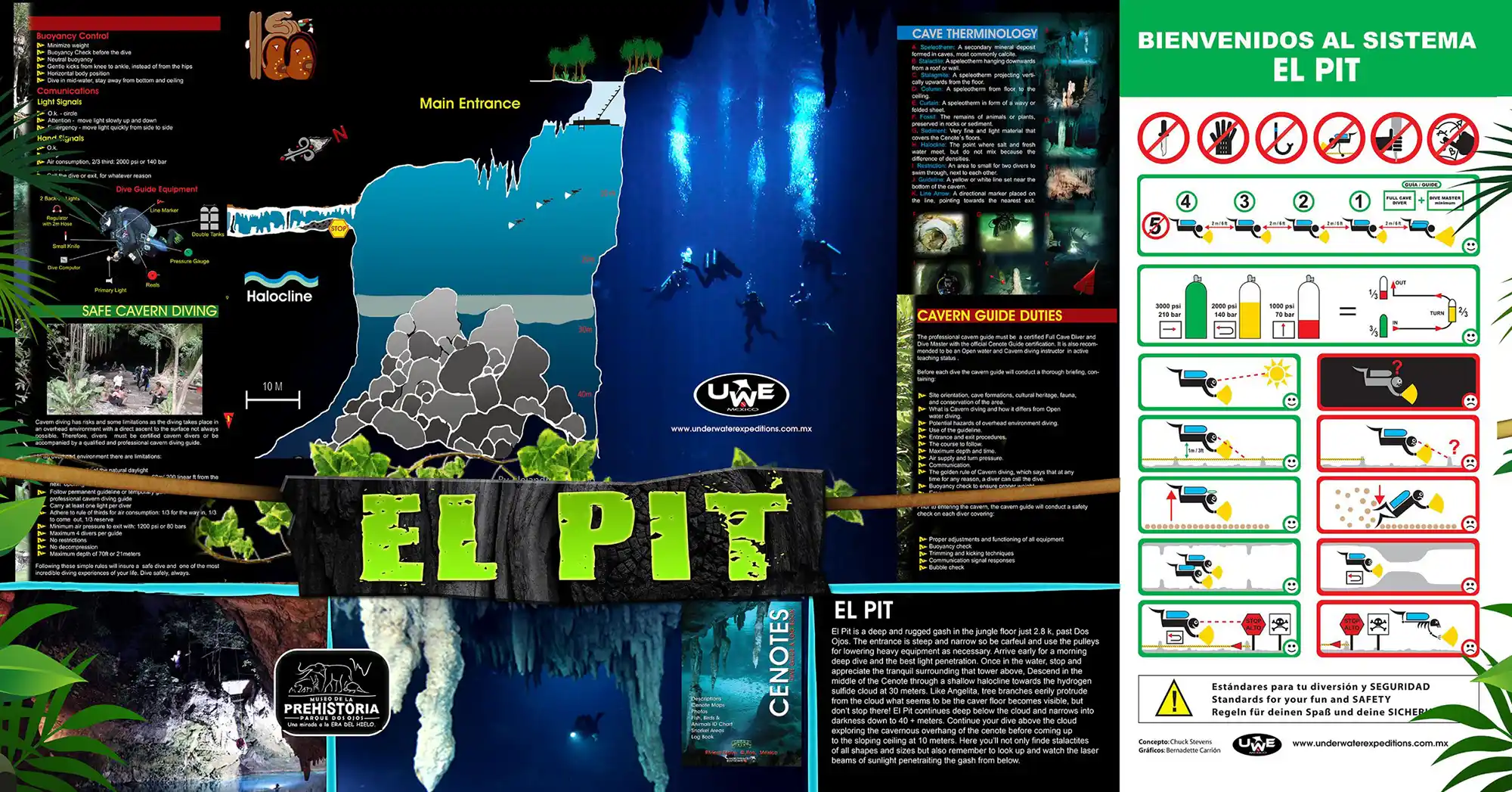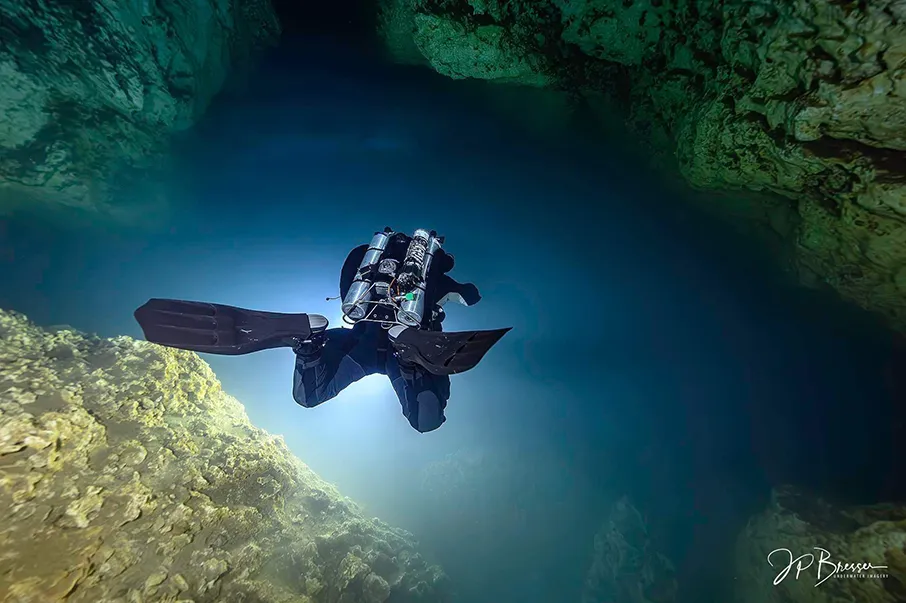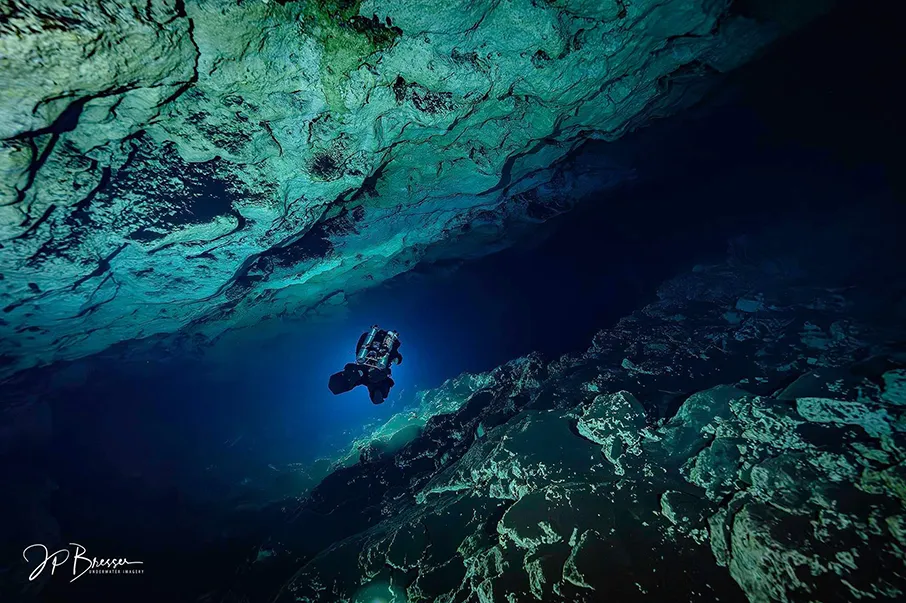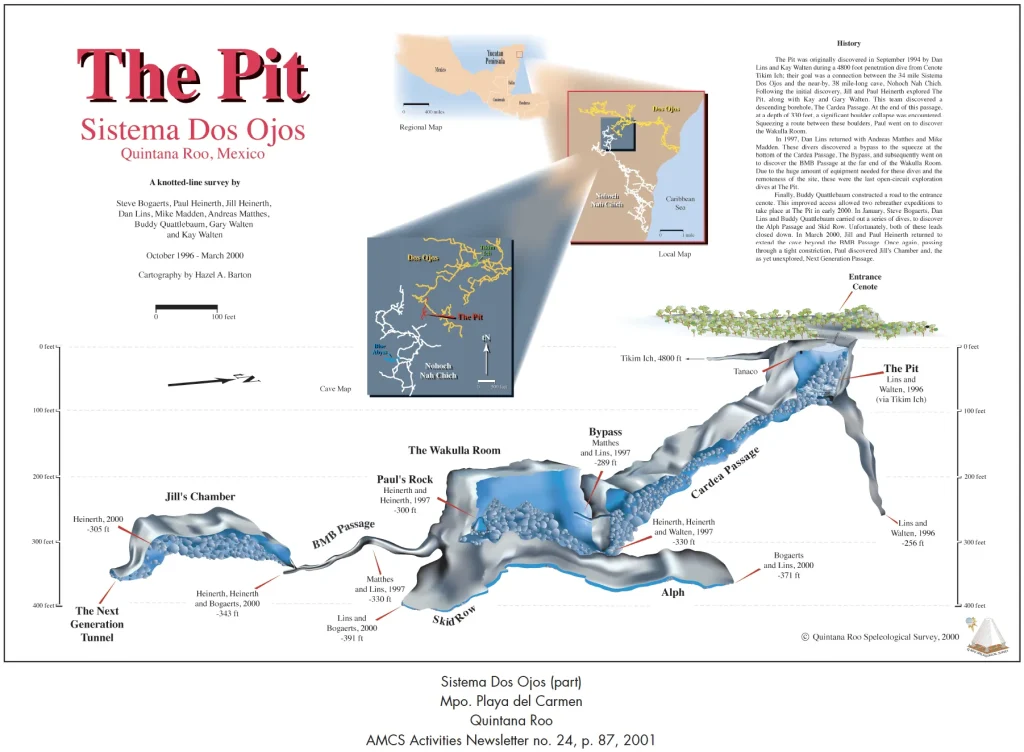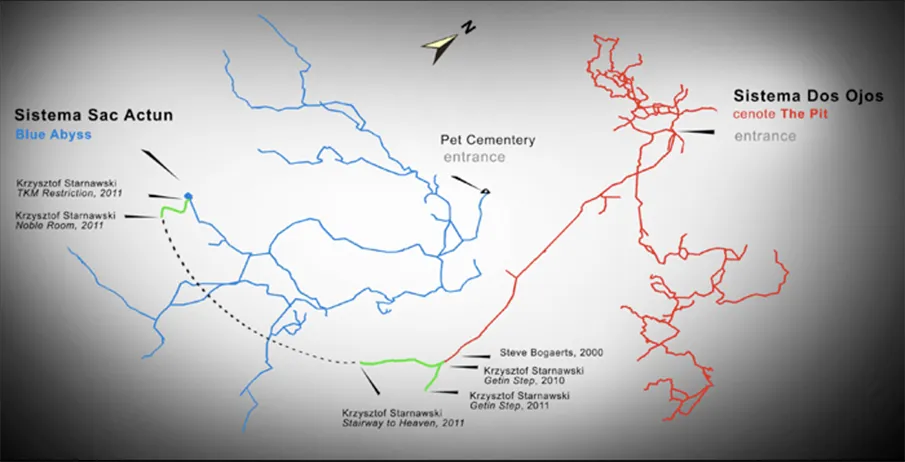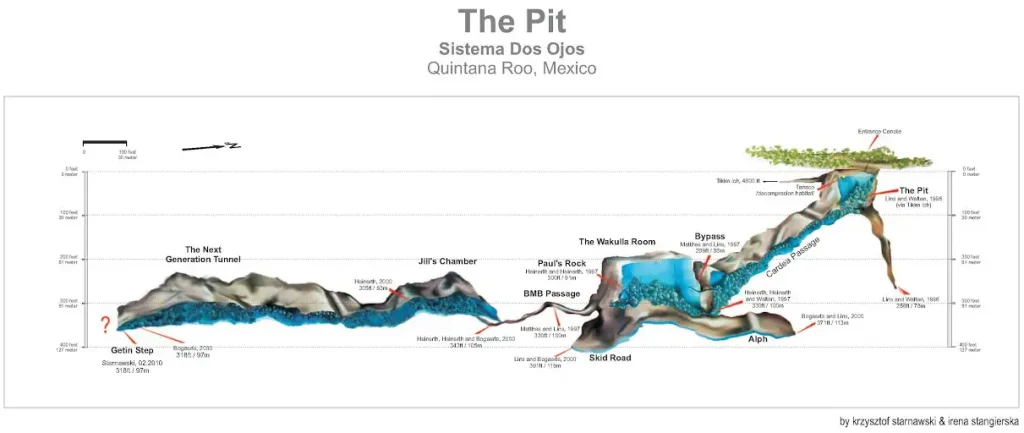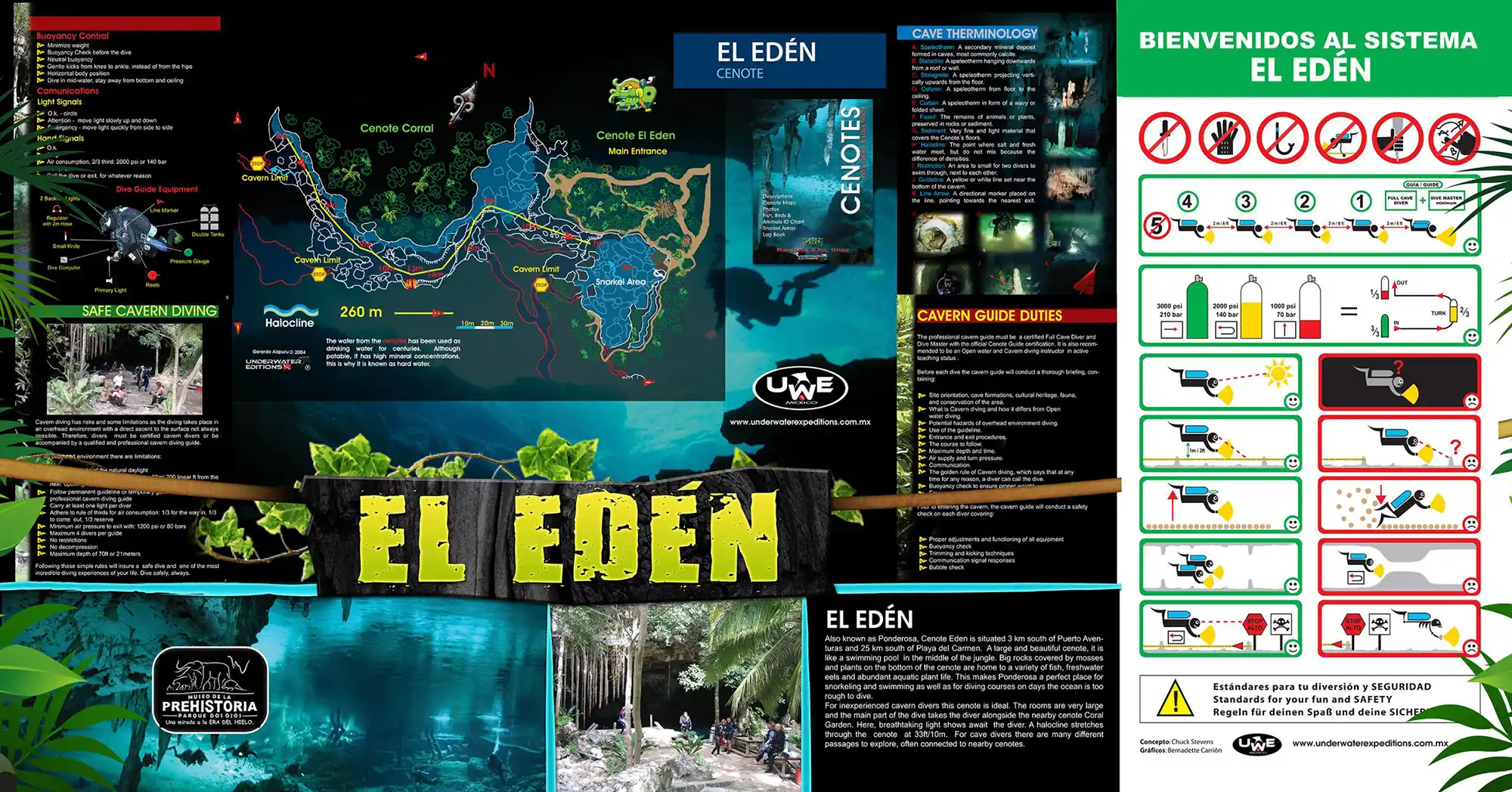On the road to Valladolid from Tulum, several well-known cenotes are available for cave diving. One is the Vaca Ha cenote, the entrance to which is combined with the road to two more cenotes: the Kim Ha cenote and the Tortuga cenote.
Vaca Ha cenote is the closest cenote to the road. Approaching the cenote, you will see a small puddle about 4 meters in diameter in the jungle. It sits at the edge of a grassy swamp and was once a well where water was pumped to a nearby water trough where cows came to drink thirty years ago. Near the cenote is a parking lot for two or three cars. There are no amenities available, so make sure to come prepared. You are going to dress and dive in!
The cenote is only available to Cave divers. Open Water divers cannot go there.
Cave lines description
The maximum depth of the Vaca Ha cave line is 27 meters, the average depth is 22 meters, and the length of the surveyed passages is 2647 meters. At a depth of 19 meters, a halocline between fresh and salt water is located.
Cenote Vaca Ha is a largely linear system with few offshoots. Depths will tend to increase the farther you get into the cave, maxing out at around 85 ft (25.9 m). Unlike neighboring Sac Aktun, there is a halocline.
You start the dive by jumping into a small pool of murky water. The permanent line is located at 10 ft (3 m); therefore, no primary reel is necessary. You negotiate 25 ft (7.6 m) of the small passageway from the small room. It opens into a huge hallway. The first 600 ft of the Cenote Vaca Ha cave line is decorated with numerous columns and speleothems, and this suddenly changes into a phreatic fracture passageway and remains this way for 800 ft (242 m).
You can get to the Stadium area of Cenote Toucha Ha by taking the first offshoot line to the left. For sidemount cave divers, there is an excellent cave section by swimming 600 ft (183 m) and entering a phreatic tube area. Take the first jump to the right after entering the phreatic fracture passageway.
Don’t forget to observe the cow skeleton while waiting at the 6-meter deco-stop at the end of the dive.
Our Kim Ha, Vaca Ha, and Tortuga Cenotes cave diving video
Vaca Ha Cenote cave lines map
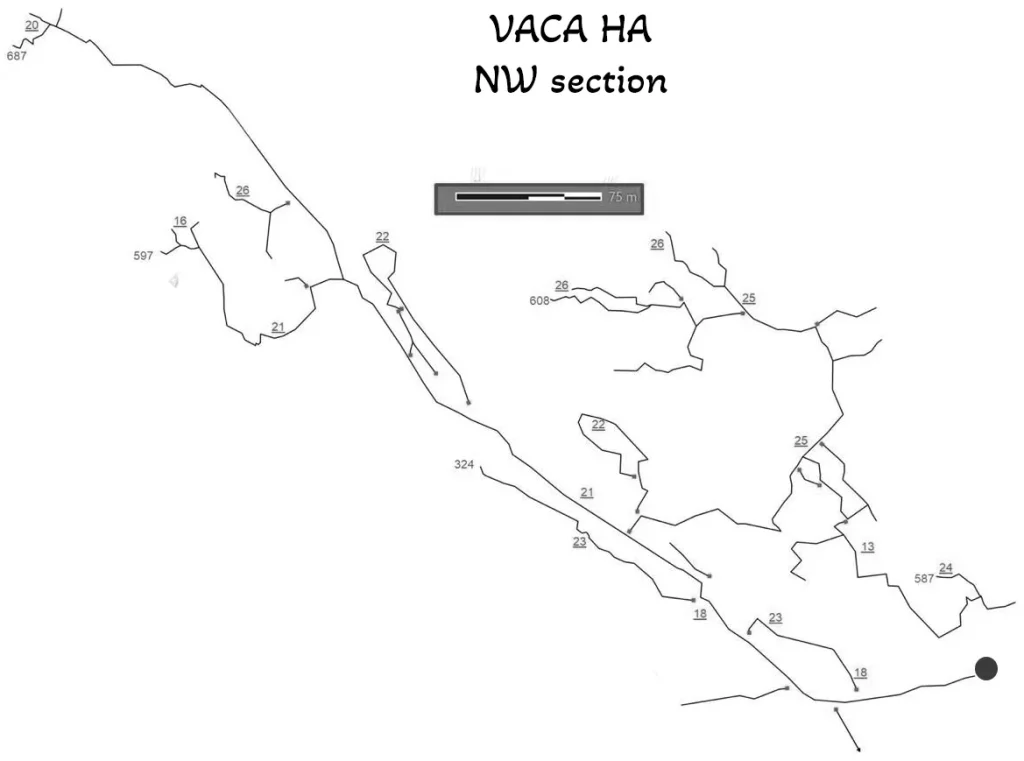
Vaca Ha Cenote location map
The first explorers were Ivan and Mary Cappelli, Sam Ferra, Randy Douglas, Sam Ferra, Steve Penn, Allen Jonushaitis, Cliff Keck, Randy Douglas, and Don Redinger in August 1992.
Other explorers were Nadia Bernie, Woody Jasper, Dan Lins, Brian Kakuk, Travis Lore, Christophe LaMalliot, Bil Philips, Daniel Riordan, and Jana Smith.
In January 2005, Nadia Bernie and David Sieff connected Cenote Vaca Ha with Cenote Toucha Ha/Sistema Zapote.
Back
